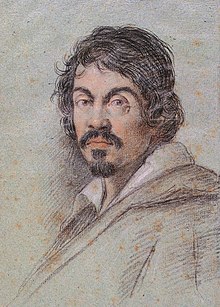One of the side effects of the renaissance of budget air and cheap flights is that a number of small regional airports have become major hubs for carriers such as RyanAir and Wizz Airlines.
 Small airports in places like Volos, Greece ; Orio, Italy, ; and Charleroi, Belgium weren’t designed with thousands of passengers passing through each day in mind. They are adapting, upgrading, and building the infrastructure.
Small airports in places like Volos, Greece ; Orio, Italy, ; and Charleroi, Belgium weren’t designed with thousands of passengers passing through each day in mind. They are adapting, upgrading, and building the infrastructure.
Take Bergamo – actually Caravaggio Airport Bergamo Orio al Serio or as referred to by RyanAir – Milan/Bergamo. In fact it’s about 45 km from Milan about 4 km from Bergamo and actually sits in the small city of Orio al Serio. Last year this small airport served over 7 million passengers!
A funny thing happens because of the mis-labeling and the fact that this is a transport hub for RyanAir, WizzAir, and Pegasus which has flights to and from destinations all over Europe, the Balkans, and Turkey. Lots of people come to ‘Bergamo/Milan’ simply because it is where they can catch a flight to where they are really going. That’s why I was there in September. I wanted to fly from Barcelona (actually Girona) to Volos, Greece but there were no direct flights and the cheapest way to get there was to fly with RyanAir to Bergamo, wait 7 hours overnight, and then catch an early morning flight (again with Ryanair) to Greece. Since I arrived at nearly midnight and left at 7 a.m. it seemed silly to go all the way to Milan or Bergamo only to wake up after a couple of hours of sleep and take the bus or a taxi back – who needs the expense of a hotel room and a taxi for a few hours sleep…I decided to sleep in the airport.
And so did hundreds of other people who were catching flights to Romania, flights to Turkey, flights to Barcelona, flights to Paris, flights to Moscow, flights to Sofia etc etc etc –
There just aren’t that many seats or benches in the waiting area and they weren’t going to let us into the departure lounges before 5:30 am. So, it was like being at a protest or stuck at an airport during a storm or at some kind of hippie camp.
Around me were circles of strangers making friends and playing cards on the floor. Groups of girls sleeping in a circle on the ground while one stayed awake to guard their bags, older travelers walking around warily and eyeing everyone as if they were potential thieves, a guy with a guitar sitting outside strumming. Groups sat around with beers or bottles of wine while others found bare floor to curl up with their bags under their heads.The scene was completely surreal and certainly would have been looked on with approval by Michelangelo Merisi da Caravaggio, for whom the airport is named – especially since I noted a couple engaged in some serious hanky-panky under a sleeping bag in the alcove where his bust looks out over the airport party. Here’s my favorite blurb about Caravaggio from Wikipedia:
Caravaggio’s novelty was a radical naturalism that combined close physical observation with a dramatic, even theatrical, use of chiaroscuro. This came to be known as Tenebrism, the shift from light to dark with little intermediate value. He burst upon the Rome art scene in 1600 with the success of his first public commissions, the Martyrdom of Saint Matthew and Calling of Saint Matthew. Thereafter he never lacked commissions or patrons, yet he handled his success atrociously. He was jailed on several occasions, vandalized his own apartment, and ultimately had a death warrant issued for him by the Pope.
An early published notice on him, dating from 1604 and describing his lifestyle three years previously, tells how “after a fortnight’s work he will swagger about for a month or two with a sword at his side and a servant following him, from one ball-court to the next, ever ready to engage in a fight or an argument, so that it is most awkward to get along with him.” In 1606 he killed a young man in a brawl and fled from Rome with a price on his head. He was involved in a brawl in Malta in 1608, and another in Naples in 1609, possibly a deliberate attempt on his life by unidentified enemies. This encounter left him severely injured. A year later, at the age of 38, he died of a fever in Porto Ercole, near Grosseto in Tuscany, while on his way to Rome to receive a pardon.
And then – when they opened the departure lounges and allowed us to start going through security, the sweepers came in, the cleaners mopped and suddenly it all seemed just like any other busy little regional airport.



